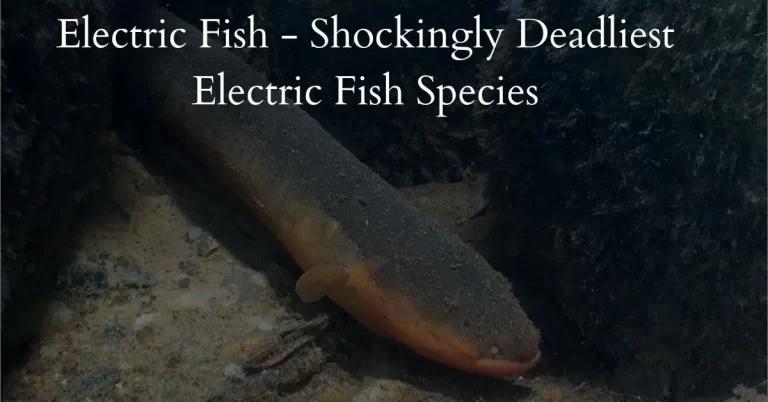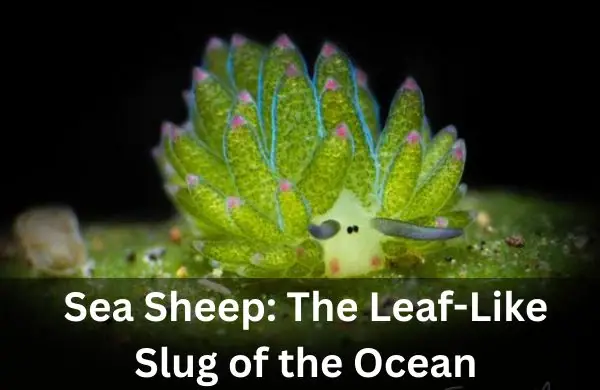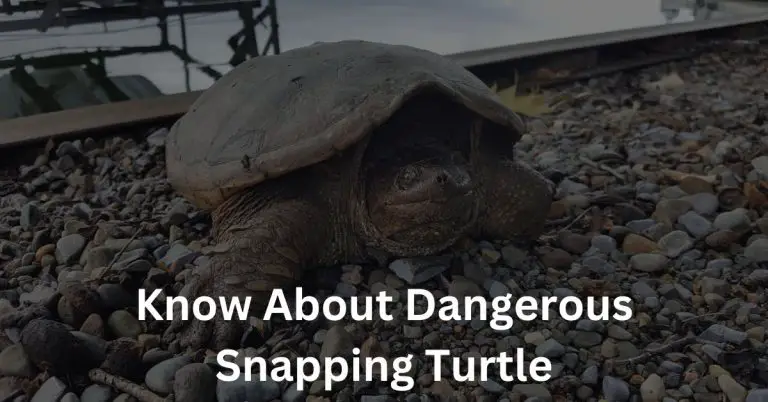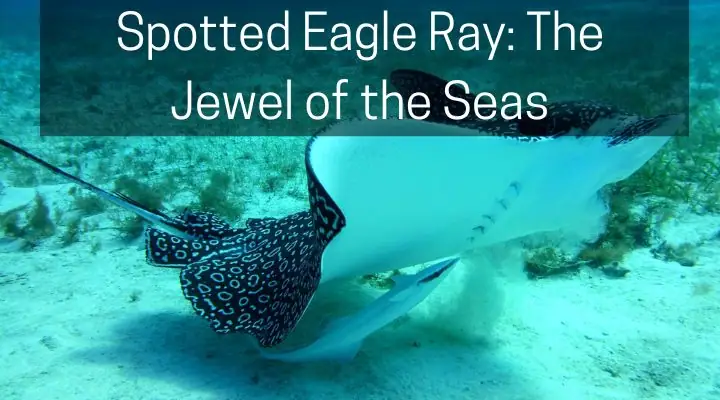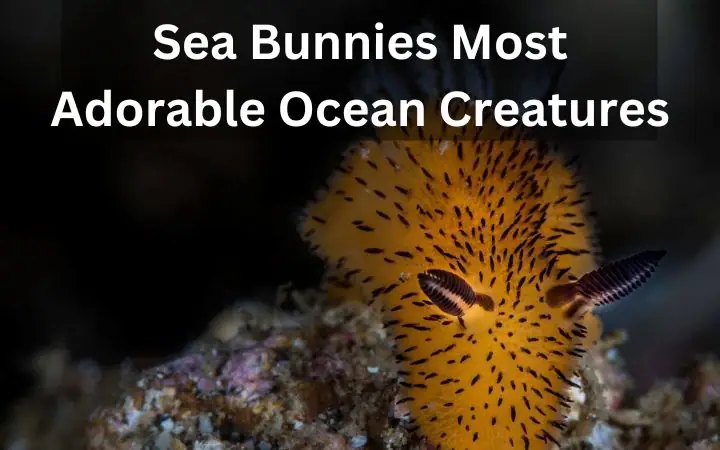Sea Robin: Amazing Fish with Legs and Fins

The sea robin is a fascinating creature that has captured the attention of marine enthusiasts and biologists alike. This unusual fish is known for its distinct appearance and unique characteristics, which set it apart from other species in the ocean. Despite its strange appearance, Sea robin plays an important role in the ecosystem and has a rich history of human interaction.
In this blog post, we’ll look closer at the Sea robin fish, exploring its appearance, behavior, diet, and how humans interact with it. Through our exploration, We seek to better understand this fascinating fish and its place in the world.
.
All About Sea Robin
Sea Robin’s Scientific Name And Family
The scientific name of the sea robin is Prionotus carolinus. It belongs to the family Triglidae, also known as the “sea robins” or “gurnards.”
.
Appearance And Characteristics
Sea robin (Triglidae) has a distinctive appearance that makes it easy to spot in the ocean. This fish has a flattened, triangular head with a large mouth and sharp teeth. Its body is covered in bony plates and has a fan-shaped tail.
The Sea robin’s broad, wing-like pectoral fins are one of its most distinguishing characteristics. These fins are often brightly colored and resemble wings in flight, giving Sea robin the appearance of a small bird gliding over the water.
Sea robin is distinguished from other fish in the ocean by its distinctive qualities, which are also well-known. For example, a Sea robin has a specialized swim bladder that produces a unique “croaking” sound when the fish is out of the water. This sound is created by the movement of muscles around the swim bladder and is used to communicate with other fish or to deter predators.
Additionally, the Sea robin fish has the ability to “walk” along the ocean floor using its pectoral fins. This allows it to move easily over rocky or uneven terrain in search of food or shelter.
Sea robins can be found in a wide range of habitats, from shallow estuaries to deep ocean waters. It is often found in sandy or rocky areas near the shore, where it can use its specialized fins to move over the ocean floor.
Sea robin is also found in large schools, which can consist of hundreds of individuals. These schools may roam in search of food or shelter, or they may settle down for extended periods of time in one place.
Overall, the Sea robin’s distinctive appearance and unique characteristics make it a fascinating creature to study and observe in the wild. Its specialized adaptations allow it to thrive in a variety of environments, and its role in the ecosystem is an important one.
.
Habitat And Range
From shallow coastal seas to farther offshore regions, sea robins can be found in a variety of habitats and ranges. From Canada’s Newfoundland to the United States Gulf of Mexico, they are frequently observed in the Western Atlantic Ocean. In the Eastern Atlantic Ocean, from the British Isles to the coast of West Africa, they can also be found. Also in the Mediterranean Sea are sea robins.
Sea robin is a bottom-dwelling fish that prefers to live near sandy or rocky areas, where it can use its specialized fins to move over the ocean floor. They may be found in deeper offshore seas up to 200 meters deep.
although they are most frequently seen in estuaries, bays, and nearshore waters. In addition to rocky or sandy areas, Sea robins can also be found near seagrass beds, coral reefs, and shipwrecks.
Because there are several varieties of Sea robins spread over the world, their range might change depending on the species. For example, the Northern Sea robin (Prionotus carolinus) is found along the eastern coast of North America, while the Giant Sea robin (Trigla gurnards) is found in the Eastern Atlantic and the Mediterranean Sea.
Overall, the Sea robin’s habitat and range are diverse, and the fish can be found in a variety of environments throughout the world. Understanding the different types of Sea robins and their preferred habitats is important for conservation efforts, as it allows us to better protect these unique and fascinating creatures.
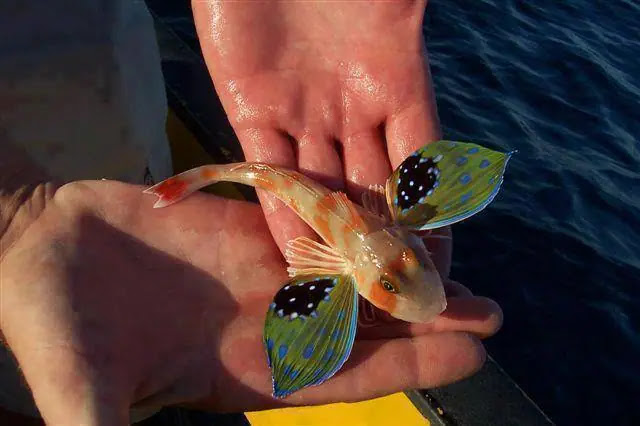
.
Behavior And Diet
Sea robin has distinctive behavior and diet that reflect their unique adaptations and role in the ecosystem. Here are some key aspects of Sea robin’s behavior and diet:
1. Feeding
The sea robin is a carnivorous fish that feeds on a variety of small fish, crustaceans, and mollusks. They use their powerful jaws and sharp teeth to crush and swallow their prey. They often hunt at night, using their sensitive barbels to detect vibrations in the sand or mud where their prey is hiding.
2. Swimming
Sea robin has a unique way of swimming that allows it to move quickly over the ocean floor. They use their large pectoral fins to “fly” or glide over the sand, and can also use these fins to “walk” along the ocean floor in search of food or shelter. When threatened, the Sea robin can swim quickly away from danger using its powerful tail.
3. Croaking
Sea robin has a specialized swim bladder that can produce a unique “croaking” sound when the fish is out of the water. This sound is created by the movement of muscles around the swim bladder and is used to communicate with other fish or to deter predators.
4. Reproduction
Sea robin reproduces through external fertilization, with the female laying her eggs on the ocean floor and the male fertilizing them. After fertilization, the eggs hatch into larvae that drift in the open ocean before settling on the ocean floor to grow into adult Sea robins.
Overall, the Sea robin’s behavior and diet reflect its unique adaptations for life on the ocean floor. Its hunting techniques, swimming style, and communication methods are all specialized to help it thrive in its environment. By studying the Sea robin’s behavior and diet, we can gain a greater understanding of its role in the ecosystem and the importance of protecting this unique and fascinating fish.
.
Threats And Predators
Sea robin faces a range of threats and predators in the wild. Here are some of the main ones:
1. Fishing: Sea robin is often caught by commercial and recreational fishermen, both as a food source and for sport. Overfishing can deplete Sea robin populations and disrupt the ecosystem.
2. Habitat destruction: Sea robin’s preferred habitats, such as rocky or sandy areas, seagrass beds, and coral reefs, are vulnerable to destruction from human activities such as coastal development, dredging, and pollution. Habitat loss can reduce Sea robin populations and disrupt their role in the ecosystem.
3. Predators: Sea robin fish is preyed upon by a range of larger fish, such as striped bass, flounder, and bluefish. It is also eaten by seabirds, dolphins, and seals.
4. Climate change: As the ocean warms and becomes more acidic, the Sea robin’s habitats and food sources may be affected, leading to changes in its behavior and population.
Overall, Sea robin faces a range of threats and predators that can affect its survival and role in the ecosystem. Conservation efforts, such as sustainable fishing practices, habitat restoration, and climate change mitigation, can help protect Sea robins and ensure their continued existence in the wild.
.
Human Interaction
Sea robins have a long history of interaction with humans, both as a food source and as a subject of scientific study. Here are some of the main ways in which humans interact with Sea robins:
1. Commercial and recreational fishing
Sea robins are caught by commercial fishermen for food, with their meat being considered a delicacy in some parts of the world. Recreational fishermen also target Sea robins for sport, with their unique appearance and behavior making them a popular catch.
2. Scientific research
Sea robins are often studied by scientists as a model organisms for understanding various aspects of marine biology and physiology, such as the role of the swim bladder in sound production and the effects of climate change on fish behavior.
3. Aquarium trade
Sea robins are sometimes kept in home aquariums, due to their unique appearance and behavior. However, they require specific water conditions and a large tank and are not always suitable for inexperienced aquarists.
4. Conservation efforts
Sea robins are sometimes the focus of conservation efforts, such as habitat restoration and sustainable fishing practices. By protecting Sea robins and their habitats, we can help ensure their continued existence in the wild.
Overall, humans have a complex relationship with Sea robins, with both positive and negative interactions. To preserve their existence and the quality of our seas as we continue to learn more about these wonderful animals, it is crucial that we work to engage with them in a responsible and sustainable way.
.
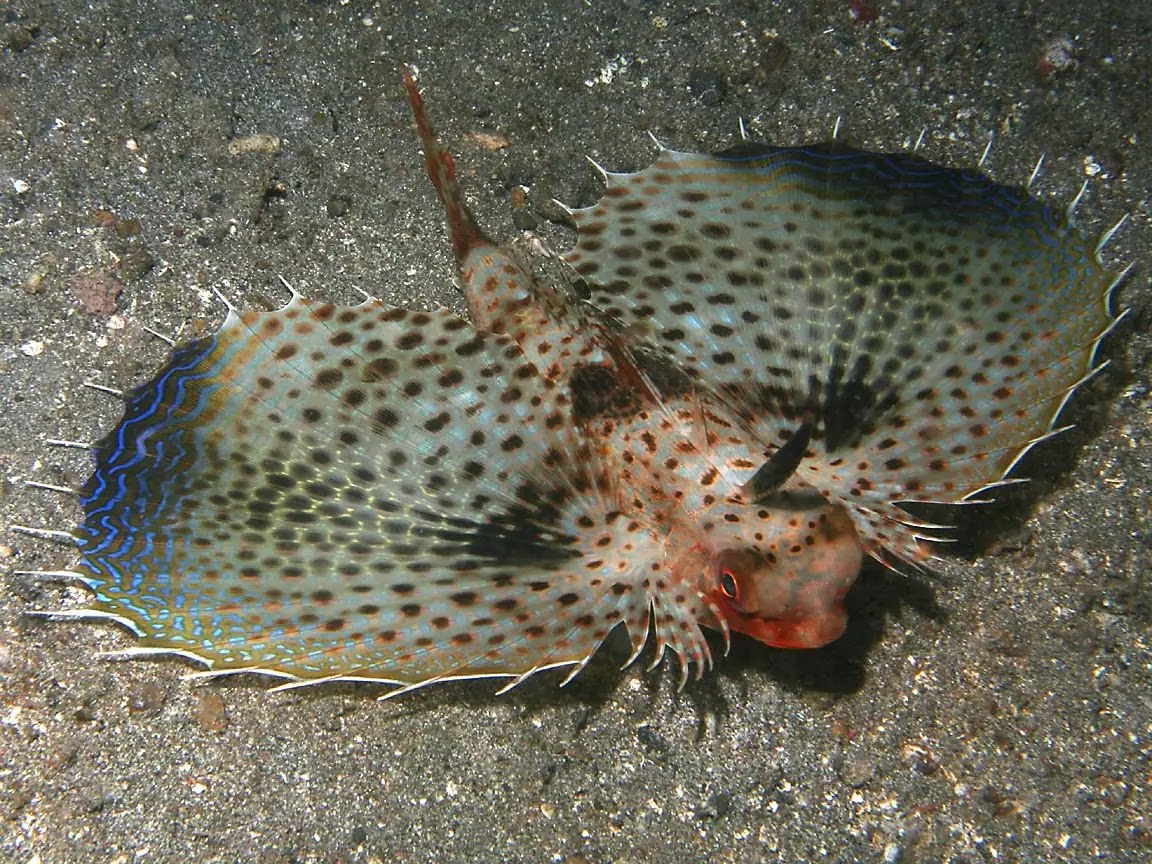
Facts About Sea Robins
Here are some interesting facts about Sea robins:
1. Sea robins are known for their distinctive appearance, with their spiny fins and brightly colored patterns. They are sometimes called “gurnards” or “sea cocks.”
2. Sea robins have a unique way of swimming that allows them to “walk” along the ocean floor using their fins as legs. They can also glide over the sand using their large pectoral fins, and swim quickly away from predators using their powerful tails.
3. Sea robins have a specialized swim bladder that can produce a croaking sound when they are out of the water. This sound is produced by the movement of muscles around the swim bladder and is used for communication and to deter predators.
4. Sea robins are carnivorous fish that feed on a variety of small fish, crustaceans, and mollusks. They use their powerful jaws and sharp teeth to crush and swallow their prey.
5. The Northern Sea Robin, which is found in North America, and the Giant Sea Robin, which is found in the Eastern Atlantic and Mediterranean, are two of the many species of sea robin that may be found worldwide.
6. Sea robins reproduce through external fertilization, with the female laying her eggs on the ocean floor and the male fertilizing them. The eggs hatch into larvae that drift in the open ocean before settling on the ocean floor to grow into adult Sea robins.
7. Sea robins are often caught by commercial and recreational fishermen, both as a food source and for sport. They are used in recipes like bouillabaisse and cioppino and are regarded as a delicacy in various areas of the world.
.
Conclusion
Sea robins are fascinating and unique species of fish that are found in oceans around the world. Their distinctive appearance, behavior, and diet reflect their specialized adaptations for life on the ocean floor. However, overfishing, habitat damage and climate change are just a few of the challenges and predators that Sea Robins must contend with.
It is important that we take steps to protect Sea robins and their habitats, to ensure their continued survival and role in the ecosystem. We can better grasp the value of biodiversity and the need to protect our seas for future generations by researching sea robins and other marine creatures.
FAQs:
Are sea robin fish poisonous?
No, sea robin fish are not generally considered poisonous to humans. However, some species of sea robin have spines on their fins that can cause painful puncture wounds if handled improperly.
What do sea robins eat?
Sea robins are carnivorous fish and primarily feed on a variety of small invertebrates and small fish. Some of the most common prey items for sea robins include crustaceans, such as crabs and shrimp, as well as mollusks, worms, and small fish.
Can you eat sea robins?
Yes, sea robins are edible and are sometimes used for food. However, because they are not a commonly targeted fish species, they are often considered a bycatch or secondary catch of commercial fishing operations. The flesh of sea robins is generally white and firm, with a slightly sweet flavor. Some people describe the taste as similar to lobster or crab.
Read Also:

